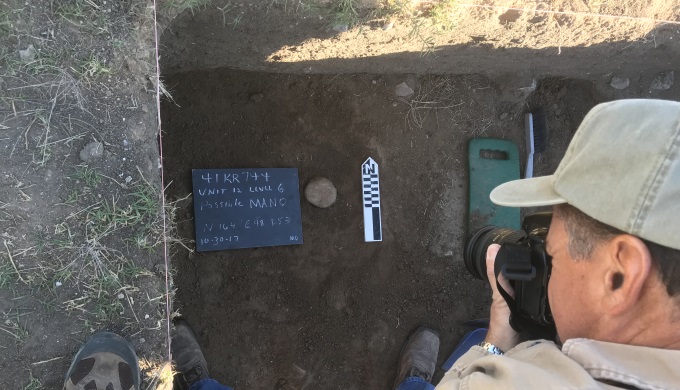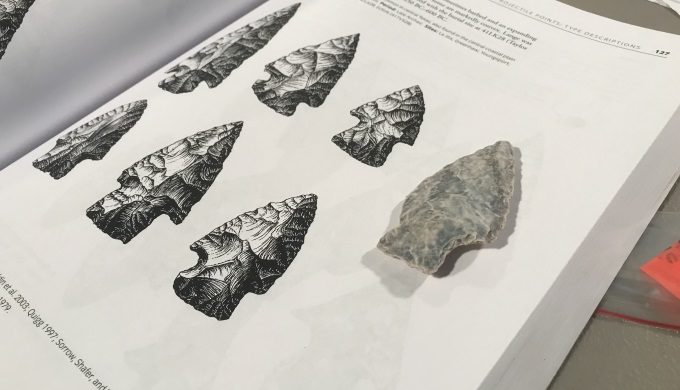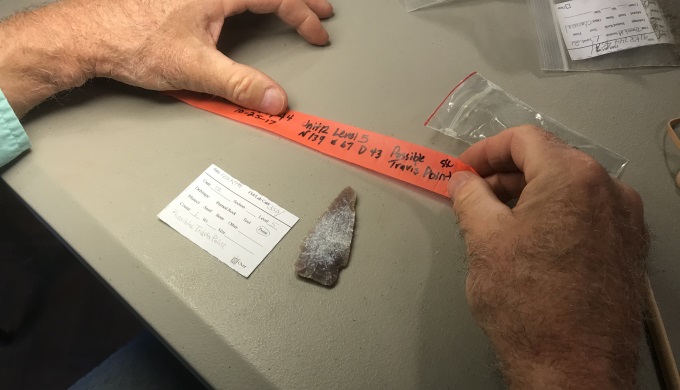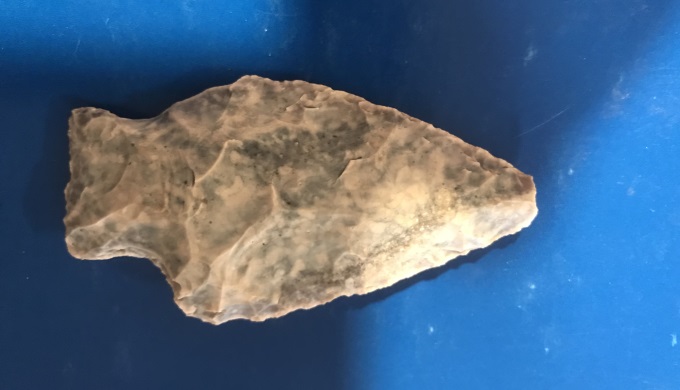These are avocational archeologists at a dig in the Texas Hill Country. If this looks like a fun group of people to get your hands dirty with, your chance to join them is coming soon. These happy people are members of the Hill Country Archeological Association, and they are holding a training program beginning on March 6 near Kerrville. Click on the link provided here to find out more.
 Robert C Deming
Robert C Deming
Things to Do
Dig With the Archeologists in the Texas Hill Country
Digging is Precisely Controlled

Photo: Robert C Deming
Archeology is a science, and context is important. Each hole is carefully placed and measured and when important artifacts are recovered, their location and depth are recorded. The depth of this hole correlates to 5,000 years before present.
Finds Are Carefully Recorded

Photo: Robert C Deming
This rock may look like just another Hill Country river rock to the untrained eye, but these avocational archeologists recognize it as what’s called a “mano,” shaped for its use in grinding or crushing seeds and grains and other foods. This mano was made and used about 5,000 years ago, and when it was uncovered in this hole, had been unseen and untouched by humans all those years. Important finds are carefully recorded.
Finds Are Identified and Tagged Back in the Lab

Photo: Robert C Deming
There are many styles of points, and a reference guide is used to determine which people made each one. This would commonly be called an arrowhead, but it is actually a dart point. Arrowheads are much smaller and didn’t arrive here until the last thousand years or so.
Careful Records Are Kept of Finds

Photo: Robert C Deming
Mornings are for digging, and afternoons are for making careful records of the finds. Not as exciting as the mano, or points, are the hundreds of chert flakes from the making of tools; however, these are also cleaned and bagged with the location and depth of their excavation.
Saving Texas History

Photo: Robert C Deming
Points like this are highly valued by collectors and are often stolen by unscrupulous people for sale on the internet. Artifacts are owned by the property owner, be they private or public, and Texas Game Wardens are on the lookout for these thieves. Illegal digging for artifacts also destroys the scientific value of the site, and the information about these ancient peoples is lost, so points like this and the location of digs are carefully protected.

